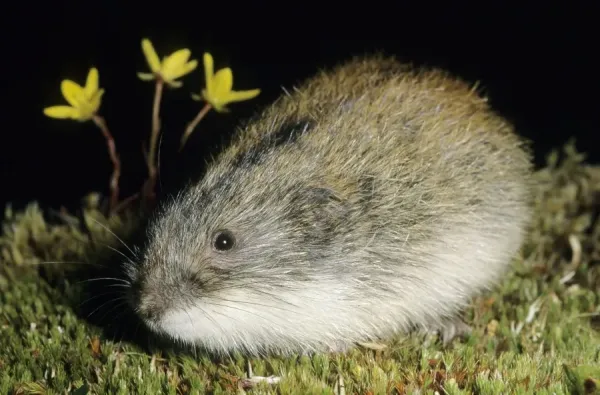“Tiny Survivors of the Tundra: What Do Lemmings Eat?”

Lemmings are small, furry rodents that thrive in Arctic and subarctic regions, particularly the tundra biome of North America, Europe, and Asia. Though they may be famous for the myth of mass suicides (thanks, Disney), in reality, they’re fascinating creatures with unique adaptations for survival—and that includes their unusual and varied diet. So, what do lemmings eat, and how do they survive the harshest climates on Earth?
1. Grasses and Sedges: The Bulk of the Lemming Diet
Lemmings are herbivores, and their primary food source consists of grasses and sedges found in the tundra:
- Cotton grass
- Tussock grass
- Sedges from the Carex family
These plants are rich in fiber and fairly abundant during the warmer months. Lemmings chew them down to the base and even dig under snow in winter to find these resources.
2. Mosses and Lichens: Survival Foods of Winter
When snow covers the tundra, lemmings switch to eating:
- Reindeer moss (actually a lichen)
- Sphagnum mosses
- Fruticose lichens that cling to rocks
These may not be the most nutritious, but they are accessible beneath the snow layer, where lemmings build tunnels and continue to forage even in extreme cold.

3. Shrubs, Bark, and Twigs: Winter Woody Treats
In addition to mosses and grasses, lemmings chew on:
- Willow shoots and bark
- Dwarf birch twigs
- Alpine azalea stems
This woody vegetation provides roughage and trace minerals. In years of population booms, when food is scarce, they consume more of these hardy materials to stay alive.
4. Roots, Tubers, and Bulbs: Underground Nutrition
When accessible, lemmings dig for:
- Plant roots and bulbs like Arctic poppies or saxifrages
- Rhizomes of tundra plants
These underground parts are nutrient-dense and especially important in early spring or late fall.
5. Fungi and Spores (Occasionally)
Though less common, lemmings may also nibble on:
- Fungal fruiting bodies
- Spores or molds on decaying plant matter
These appear more often in transitional seasons like early autumn.
6. Do Lemmings Eat Insects?
No, lemmings are strictly herbivorous. While other small rodents may be omnivorous, lemmings avoid:
- Insects
- Carrion
- Animal products
Their digestive systems are specialized to handle fibrous plant material, and they lack the enzymes to properly process meat.
7. Coprophagy: Recycling Their Own Waste
Like rabbits, lemmings practice coprophagy—they eat their own feces to re-digest plant matter and extract more nutrients. This behavior is vital in nutrient-poor environments like the tundra.
8. Seasonal Diet Shifts: Adapted to the Arctic Clock
- Summer: Lush plant growth, abundant sedges, grasses, and flowers
- Winter: Bark, moss, and dried stems hidden under the snow
Their teeth grow continuously, which helps them chew tough materials year-round.

Conclusion: Nature’s Resilient Foragers
Lemmings may be tiny, but their ability to survive in harsh, frozen landscapes is impressive. With a diet centered around grasses, mosses, roots, and shrubs, they’re well-adapted to the seasonal extremes of the Arctic. Their low metabolism, snow-burrow lifestyle, and even their poop-eating habits all help them make the most out of limited food sources in an unforgiving environment.



